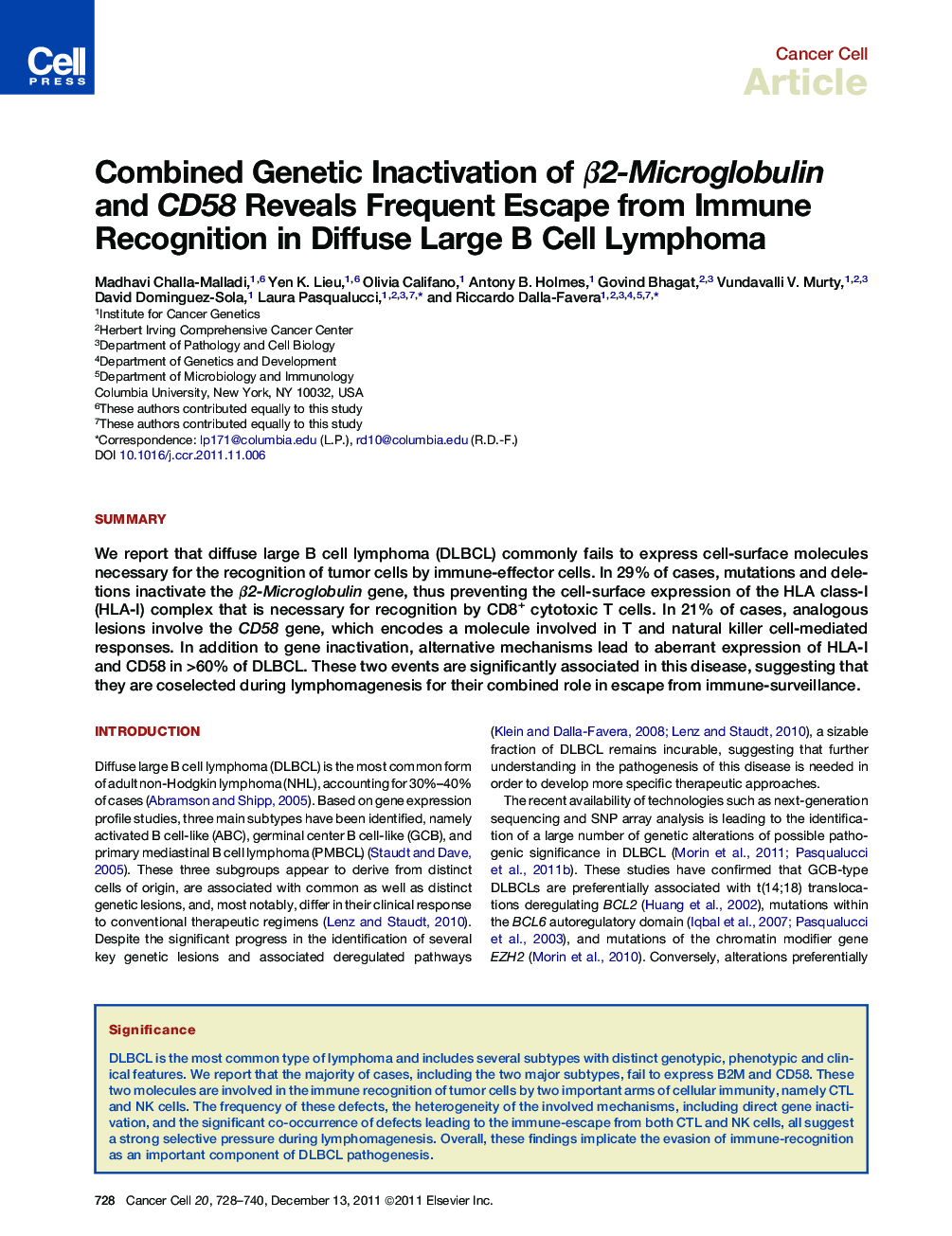| Article ID | Journal | Published Year | Pages | File Type |
|---|---|---|---|---|
| 2108136 | Cancer Cell | 2011 | 13 Pages |
SummaryWe report that diffuse large B cell lymphoma (DLBCL) commonly fails to express cell-surface molecules necessary for the recognition of tumor cells by immune-effector cells. In 29% of cases, mutations and deletions inactivate the β2-Microglobulin gene, thus preventing the cell-surface expression of the HLA class-I (HLA-I) complex that is necessary for recognition by CD8+ cytotoxic T cells. In 21% of cases, analogous lesions involve the CD58 gene, which encodes a molecule involved in T and natural killer cell-mediated responses. In addition to gene inactivation, alternative mechanisms lead to aberrant expression of HLA-I and CD58 in >60% of DLBCL. These two events are significantly associated in this disease, suggesting that they are coselected during lymphomagenesis for their combined role in escape from immune-surveillance.
► Disruption of B2M and CD58 by genetic lesions is a frequent event in DLBCL ► Multiple mechanisms lead to combined loss of surface B2M, HLA-I, and CD58 expression ► Evasion of immune surveillance plays a central role in DLBCL pathogenesis
